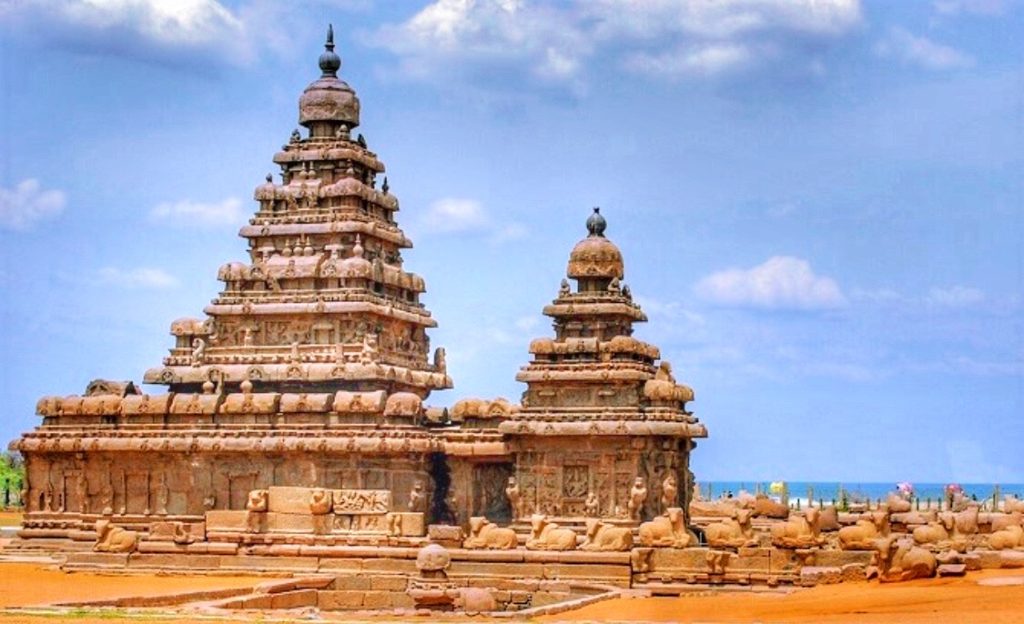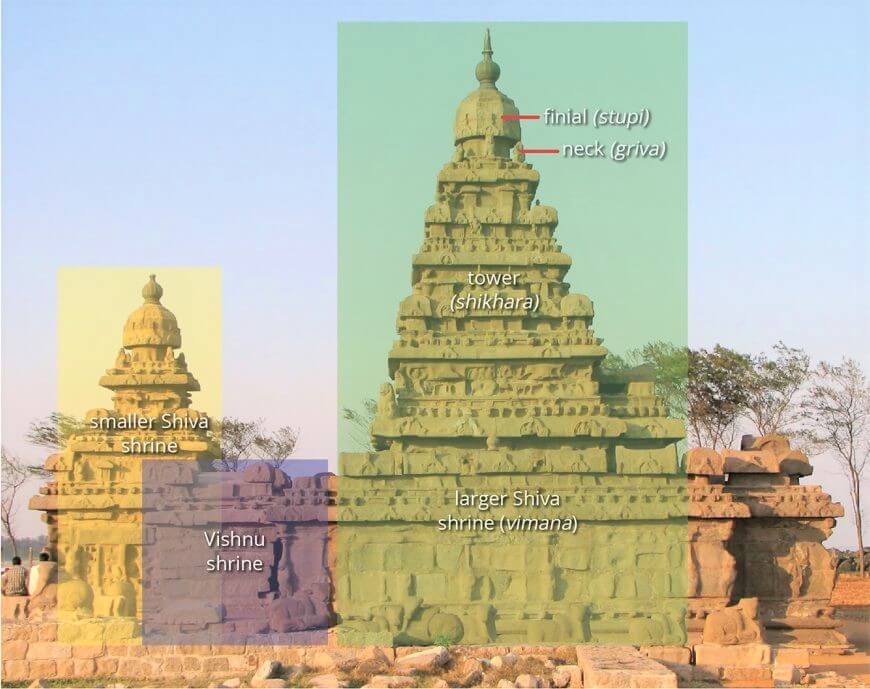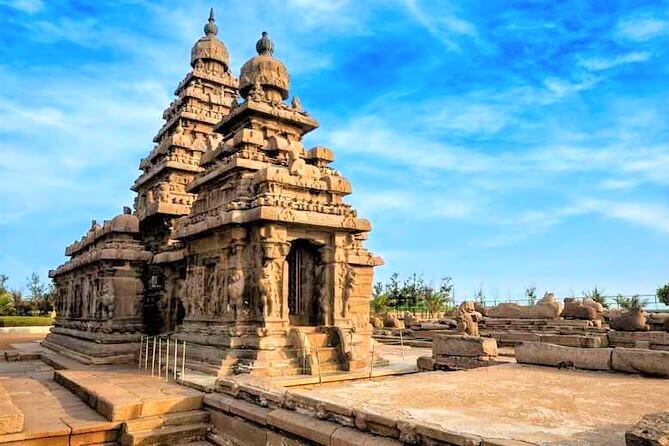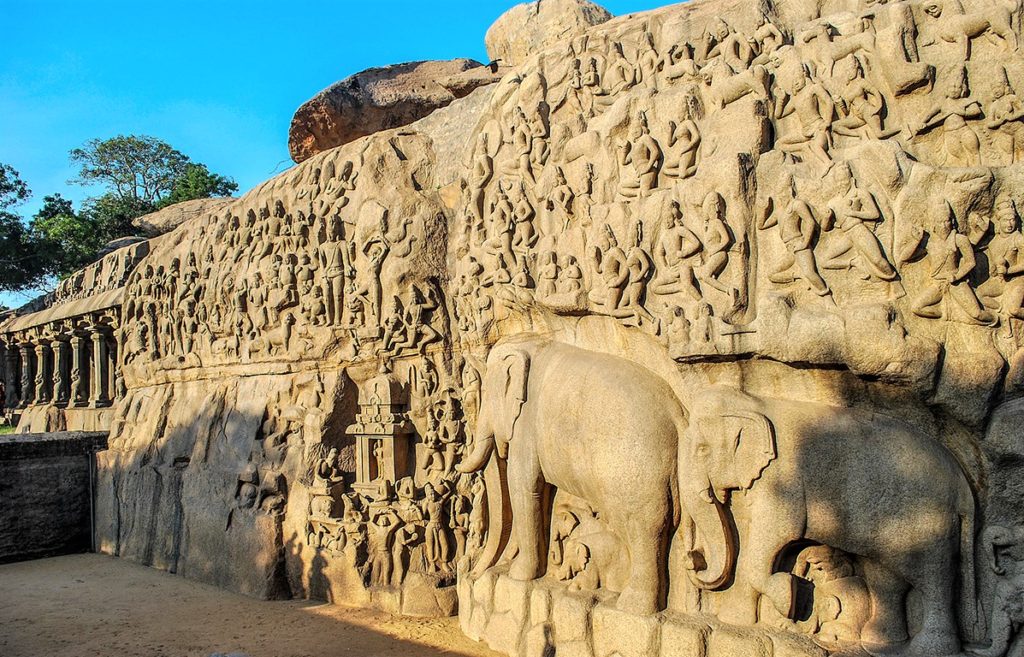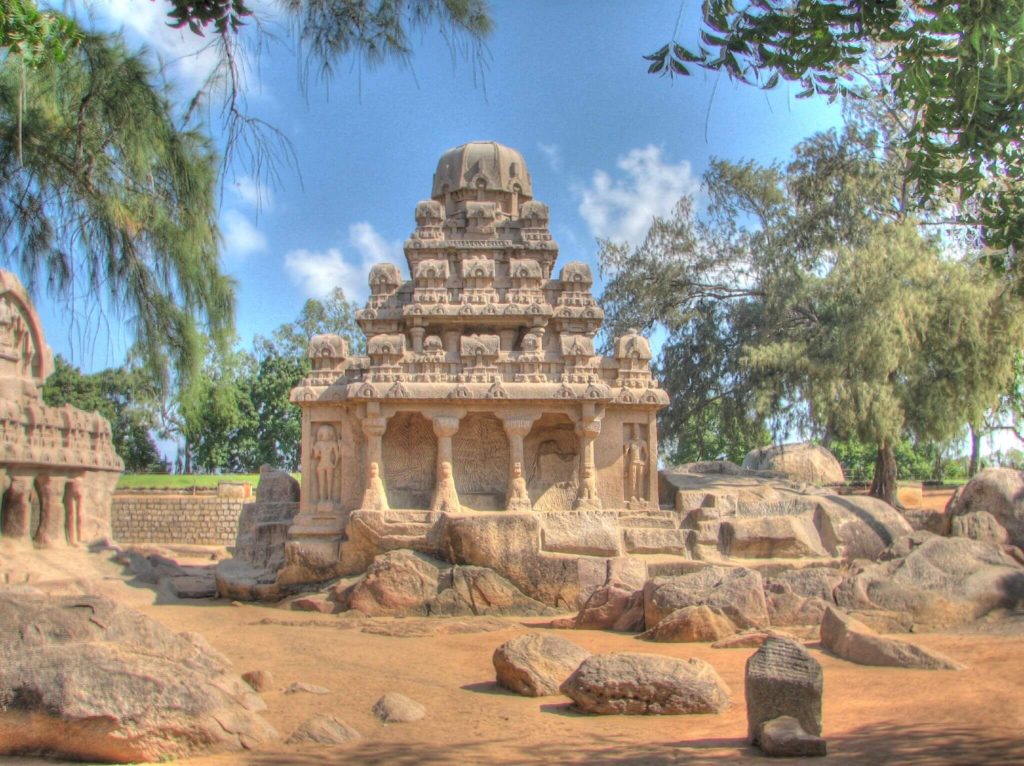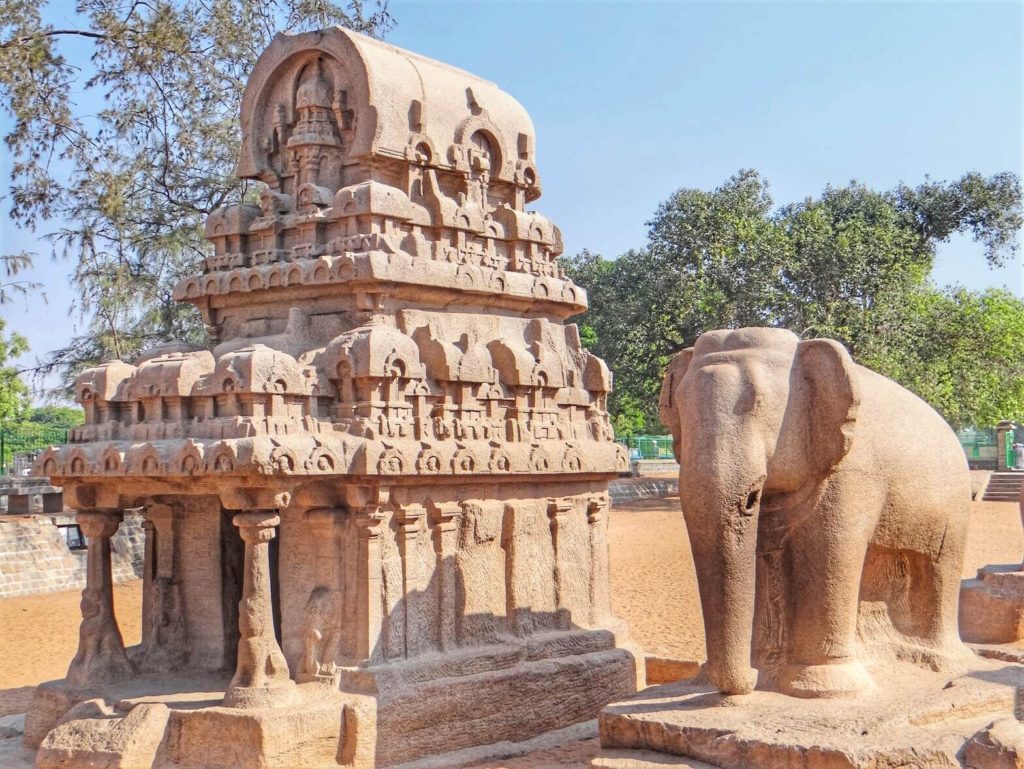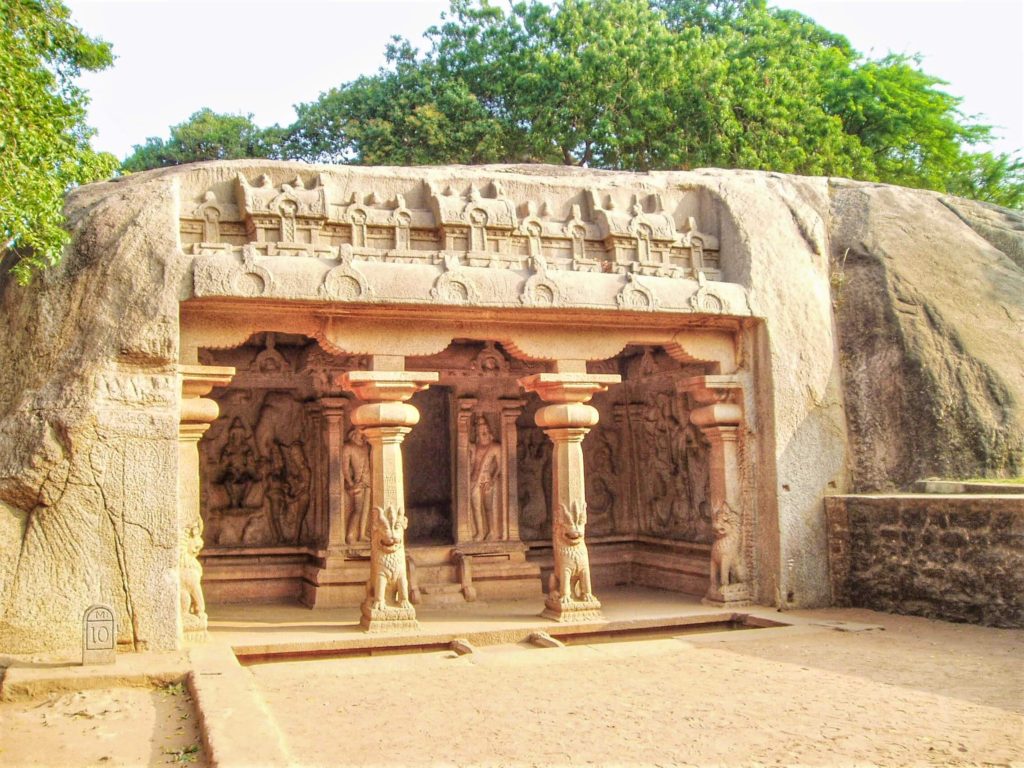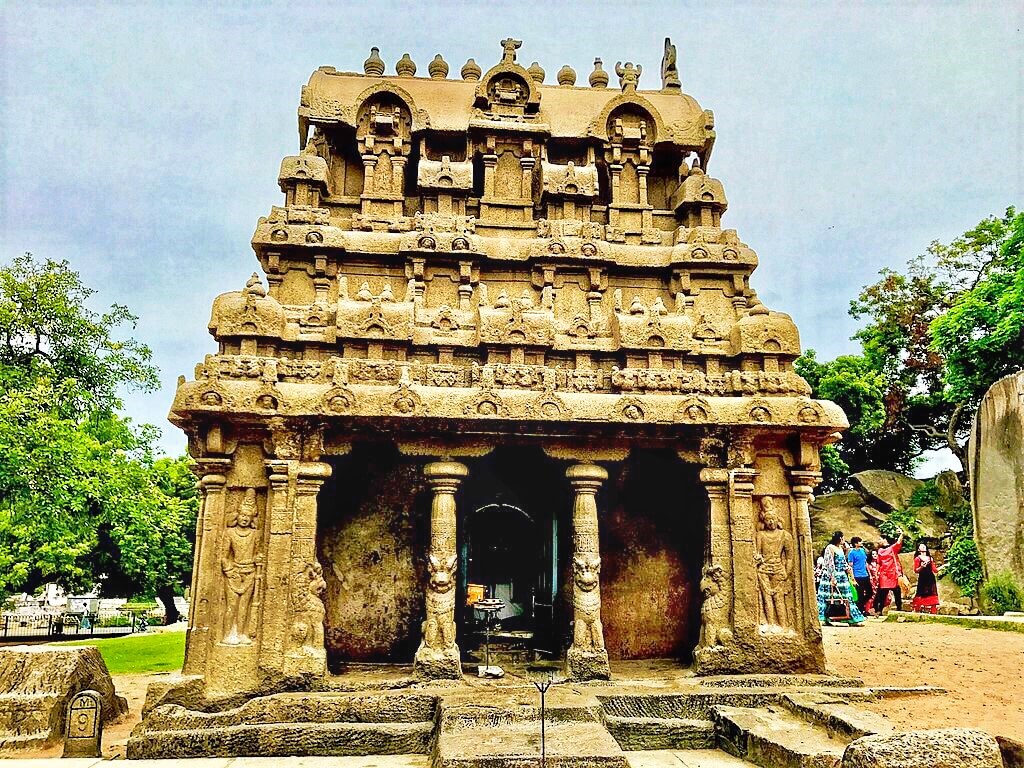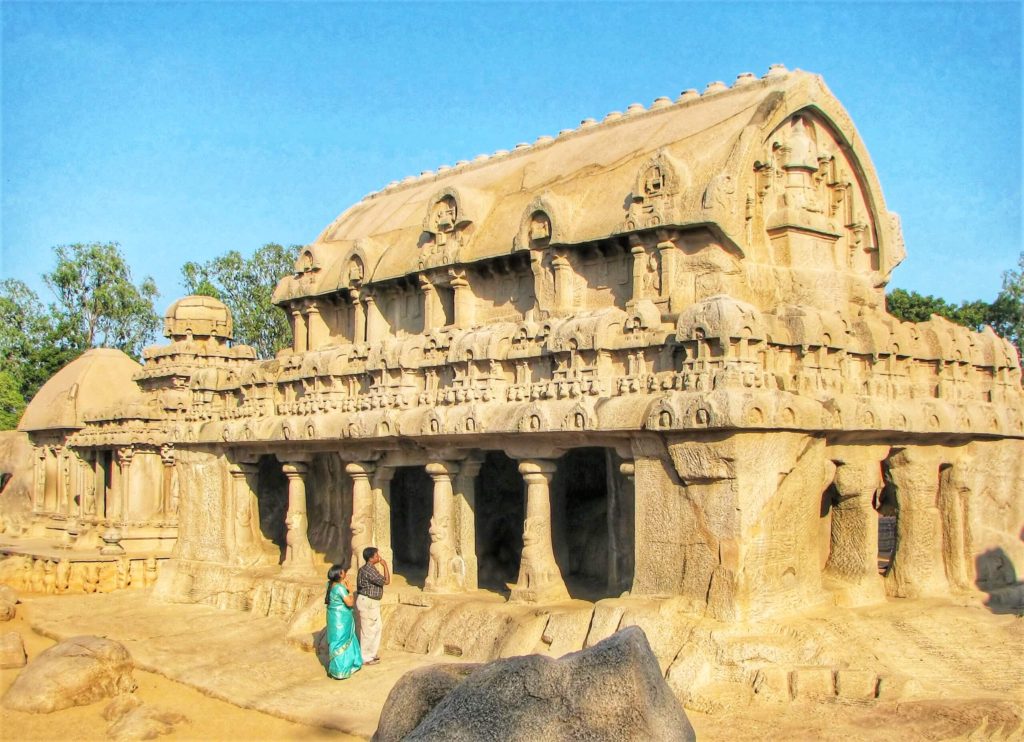Shore Temple, Mahabalipuram (Mamallapuram)

Published by Shivam Singh
15th June, 2020
Built in 7th century between 700-730 AD, Shore Temple is one among the 40 Hindu monuments at resort town Mamallapuram, 60 Kms from Chennai, on the Coromandel Coast of Tamil Nadu state, India.
Built in Dravidian style of architecture, under the patronage of the King Narasimhavarman II Rajasimha of Pallava Dynasty, it is considered as the finest early example of medieval southern Indian temple architecture.
Shore Temple complex has 3 three different shrines: The main temple is a five-storeyed structure sculpted out of granite dedicated to Lord Shiva. At the rear end, there are two shrines facing each other. One shrine is dedicated to Ksatriyasimnesvara and the other to Lord Vishnu.
The Mamallapuram monuments and temples, including the Shore Temple complex, were collectively designated a UNESCO World Heritage site in 1984.
Shore Temple is also acknowledged for being the first stone structure made by Pallavas. Before this, the monuments used to be carved out of the rocks or stones.
Shore Temple is a five-storied rock-cut structural temple, built with blocks of granite. The spire is extensively decorated with carvings and sculptures. In the recent years, a stone wall has been constructed to protect the shrine from further sea-erosion.
This temple demonstrates progression from rock cut structures to free standing structural temples, and displays all the elements of mature Dravidian architecture.
It signifies religious harmony with sacred spaces dedicated to both Shiva and Vishnu.
Erected on a 50 feet square platform, the temple is a pyramidal structure rising to the height of 60 feet.
Though the tsunami of 26 December 2004 that occurred in the Indian Ocean struck the temple and the surrounding garden, the Shore Temple was not badly damaged, as the water level returned to its normal level within a few minutes.
Also the temple foundation is on hard granite rock, it was able sustain the waves created by the tsunami.
At the time of its creation, the site was a busy port, sailors and merchants at sea could spot the shikharas of the temple from a distance and use those majestic towers to mark their arrival to the prosperous port city of Mahabalipuram.
In this way, not only was the temple a home for the gods Shiva and Vishnu, but also a feature of the landscape, and an icon of the dominion of the great Pallava kings.
The architecture of the Shore Temple was continued by the Cholas (in the temples that they built) who ruled Tamil Nadu after defeating the Pallavas.
Shore Temple is no more a temple worshipped. The structure of the temple was erected basically as a work of art. In the present day, Shore Temple makes the background of Mahabalipuram Dance Festival held annually in January/ February. The festival was organized to promote the traditional dance as well as tourism in Mahabalipuram.
Entry Timings : 6.00 am to 6.00 pm
Pallava Dynasty
The Pallava dynasty was an Indian dynasty that existed from 275 CE to 897 CE, ruling a portion of southern India. They gained prominence after the eclipse of the Satavahana dynasty, whom the Pallavas served as feudatories.
Pallavas became a major power during the reign of Mahendravarman I (571–630 CE) and Narasimhavarman I (630–668 CE) and dominated the Telugu and northern parts of the Tamil region for about 600 years until the end of the 9th century. Throughout their reign they were in constant conflict with both Chalukyas of Badami in the north and the Tamil kingdoms of Chola and Pandyas in the south. Pallava was finally defeated by the Chola ruler Aditya I in the 9th century CE.
Pallavas are most noted for their patronage of architecture, the finest example being this temple (Shore Temple), a UNESCO World Heritage Site in Mamallapuram. The Pallavas, who left behind magnificent sculptures and temples, established the foundations of medieval South Indian architecture.
Group of Monuments at Mahabalipuram
The site of Shore Temple also hosts 40 other ancient Hindu monuments and temples in its vicinity. Built during 7th and 8th century CE, together they are called as Group of Monuments at Mamallapuram and is a UNESCO World Heritage Site.
This include one of the largest open-air rock-reliefs in the world: the Descent of the Ganges or Arjuna’s Penance.
The group contains several categories of monuments: ratha temples with monolithic (single rock cut) processional chariots; mandapa viharas (cave temples) with narratives from the Mahabharata; rock reliefs; stone-cut temples, and archaeological excavations dated to the 6th century and earlier.
All monuments were built during the Pallava dynasty.
Known as the Seven Pagodas in many colonial-era publications, they are also called the Mamallapuram temples or Mahabalipuram temples in contemporary literature. The site, restored after 1960, has been managed by the Archaeological Survey of India.
Below is a list of few of the monuments at the site:
Ratha temples
- Dharmaraja Ratha
- Bhima Ratha
- Arjuna and Draupadi Rathas
- Nakula Sahadeva Ratha
Cave temples
- Varaha
- Kotikal
- Dharmaraja
- Ramanuja
- Koneri
- Krishna
- Atiranachanda
- Adivaraha
- Mahishasuramardini
- Panchapandava mandapam
Structural temples
- Shore Temple
- Olakkanesvara temple
- Mukundanayanar temple
This sea-side beautiful location at 60 Kms from Chennai is definitely a must visit site.
Text is available under the license: Creative Commons Attribution-NonCommercial-ShareAlike; additional terms may apply. This license lets others remix, tweak, and build upon this content non-commercially, as long as they credit the author and license their new creations under the identical terms.
If you think any of the content here is not as per the copyright laws, please let us know via email or contact form on home page, content will be removed from page.
